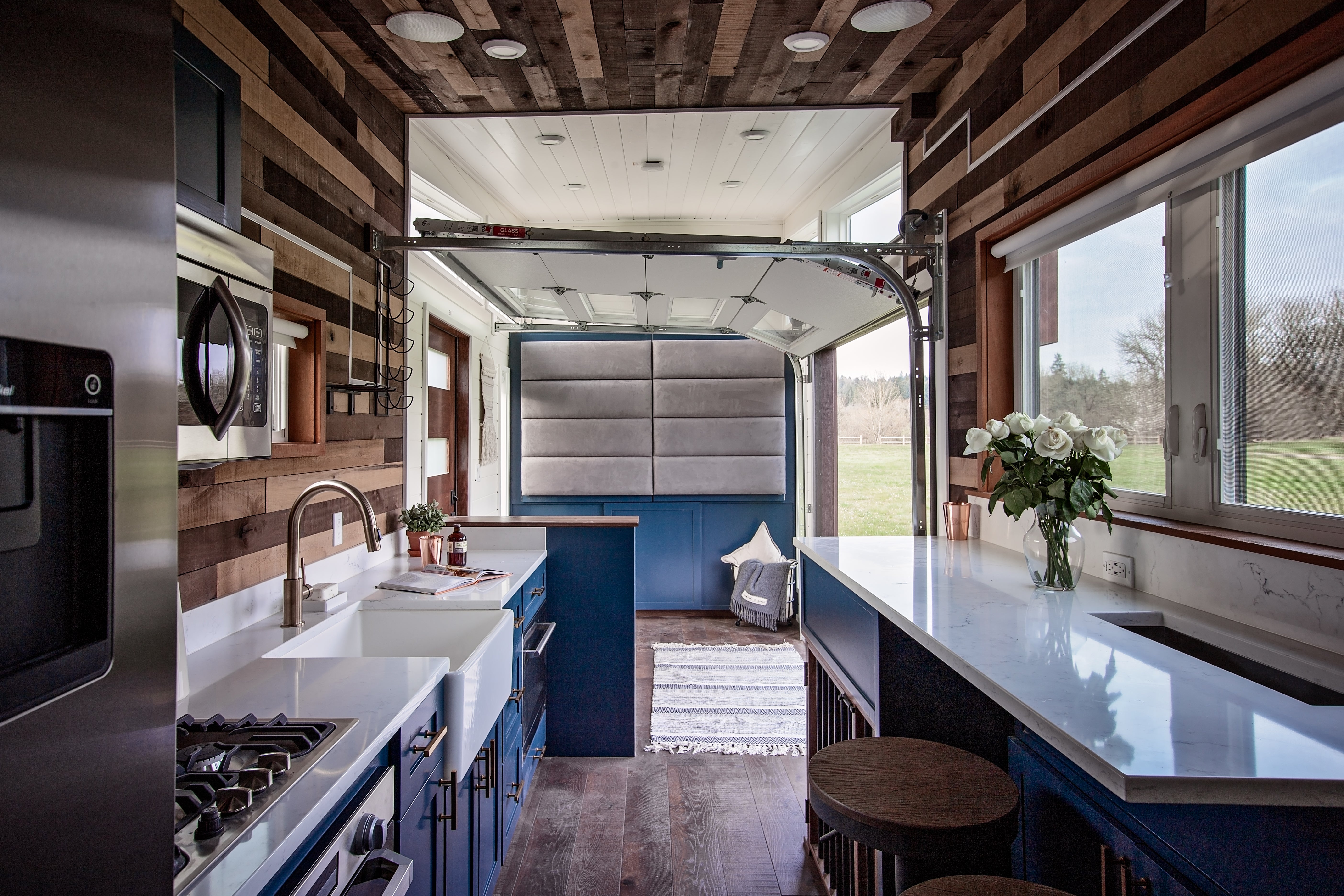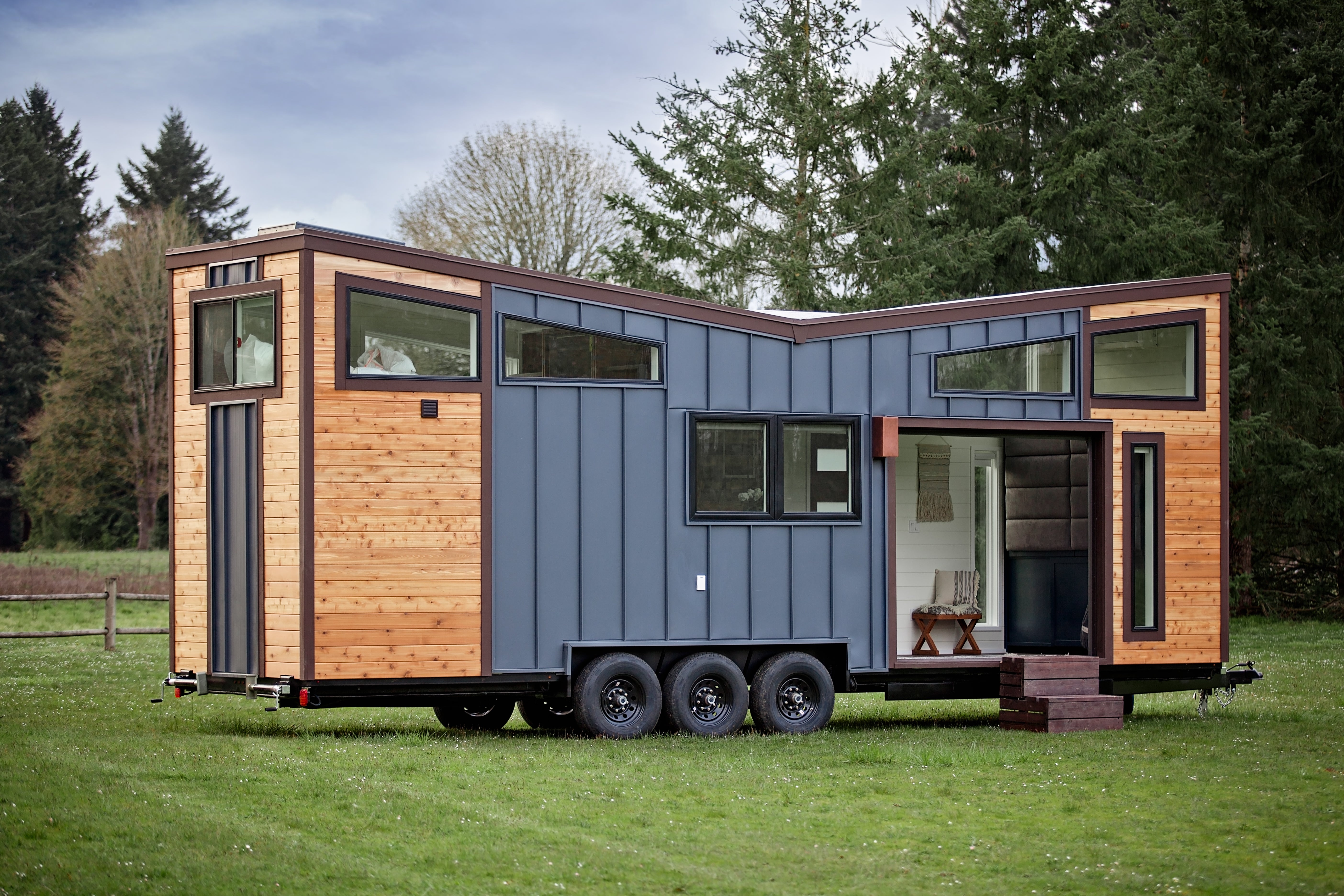The popularity of tiny homes has skyrocketed over the last decade. They’re affordable, sustainable, and offer immense lifestyle flexibility for those who want to balance home ownership with a wandering spirit. However, tiny homes also come with different security risks than traditional homes, thanks to their size and placement on typically rural land.
In this article, we’ve outlined the security checklist every tiny homeowner should follow, from ensuring perimeter protection with Colorbond fencing to creating secret storage solutions for valuables. If you’re a tiny homeowner or even just thinking about purchasing a tiny home, consider this your guide to tiny home safety.
Securing Your Tiny Home’s Surroundings

Property Boundaries
Defining your property lines can help deter opportunistic entry. Posts, stones, gated driveways, and defined footpaths help signal that a section of land belongs to you. But for tiny home owners, permanent boundaries like these aren’t always an option. Many tiny homes on wheels sit on rented land or a shared block.
Creating clear boundaries, even temporary ones, can help secure your tiny home’s surroundings. Temporary markers, such as planter boxes or raised beds, are great options for outlining your property lines on land that’s not yours.
Fencing and Physical Barriers
If you own your property or your landlord allows it, fencing and physical barriers are the best way to block intruders from attempting to enter your property. Opt for durable, solid-panel styles that offer privacy while preventing scouting. In rural Australia, weather-resistant, bushfire-safe fencing is especially important. For example, Colorbond fencing is a low-maintenance and secure option well-suited for tiny homeowners.
Outdoor Lighting
Motion-activated and timed lights are best for deterring potential intruders by instantly revealing movement around your property and providing consistent visibility around the perimeter. Lights should be placed along the fenceline, near doorways, under eaves, along walking paths, and underneath the tiny house for optimal security.
Natural Surveillance
You can also naturally secure your tiny home’s surroundings by keeping your lines of sight open, trimming tree limbs and removing tall grasses from the landscape. This allows you to monitor your property from inside the home. In a shared property, open lines of sight between neighbours can ensure others are also passively scanning the property.
Reinforce Your Entry Points
Doors
Your front door is your next line of defence against intruders. Choose a solid timber or steel door – hollow doors are too weak to prevent forced entry. You should also ensure exterior doors are fitted with interior locking mechanisms, strong deadbolts, and, if available, smart locks.
Windows
Every window in your tiny home should have a functioning lock, even your loft windows. For windows you rely on for airflow, add restrictor stays that provide safety and security without limiting your ventilation. You should also consider windows that are more impact-resistant.
For example, polycarbonate windows and windows with security film resist shattering better than standard glass windows. On the tiny home’s interior, install blinds and curtains that can prevent Peeping Toms from scouting.
Skylights and Roof Hatches
Intruders often target root openings because homeowners often neglect to properly secure them. Like with your doors and windows, skylights and roof hatches should have interior locking mechanisms that can’t be accessed from the outside.

Protect Your Wheels, Chassis, and Foundation
For Tiny Homes on Wheels
When living in a home on wheels, your worst nightmare is likely having someone drive off with your house! Wheel boots, chock locks, hitch pins, and coupler locks can prevent your tiny home from being moved and deter theft. A careful parking strategy matters, too. Back the hitch close to a wall or fence and make unauthorised towing nearly impossible.
For Tiny Homes on Foundations
Enhance the security of your tiny home with anchoring systems that secure it to its footings and prevent forced lifting. Options may include screw-in or concrete ground anchors or stainless steel tie-down cables. It’s also wise to add foundation enclosures like panels or skirting to stop intruders from accessing your tiny home’s wiring or plumbing.
Choose Your Interior Security Systems
Smart Systems
In this day and age, smart security systems can make all the difference in keeping your tiny home safe. The key is choosing options that suit the unique needs of a tiny house. For example, Wi-Fi cameras are compact, low-energy models that are perfect for small spaces, while magnetic contact sensors can notify you of intruders while you’re sleeping in the loft space
Fire and Hazard Safety
Intruders aren’t the only safety consideration of tiny home owners; you need to be prepared for anything, from fire safety to gas leaks. Install smoke alarms in your kitchen, living area, and loft bedroom. Likewise, gas and carbon monoxide detectors are non-negotiable in small spaces.

Secure Your Valuables and Belongings
Hidden Storage
Tiny homeowners are no strangers to finding unique storage solutions. To optimise security, ensure your drawers and hidden storage spaces are lockable. You may even consider adding unexpected hiding spots for your things, such as false bottoms in cabinets or secret safes behind wall art.
Visibility
It’s wise to avoid showcasing your valuables. This is another benefit of good, reliable perimeter fencing, as it can block out the view of the contents of your tiny home. Keep laptops, jewellery, expensive cameras – basically anything expensive – out of sight when you’re not home or during the night. Blackout curtains or blinds are an excellent choice for limiting visibility of your home’s interior from the outside.
Key Takeaways
Dealing with the security risks of tiny homeownership isn’t rocket science. Remember:
-
Secure your tiny home’s surroundings with temporary markers or more permanent property boundaries, such as Colorbond fencing.
-
Reinforce your entry points with solid exterior doors, impact-resistant windows, and locking mechanisms on everything from your front door to your roof hatch.
-
Protect your wheels, chassis, and foundation with locks and anchoring systems.
-
Choose interior security systems that suit the small spaces of a tiny home, investing in smart systems and fire safety.
-
Secure your valuables and belongings with hidden storage and mindfully limited visibility.





Share: